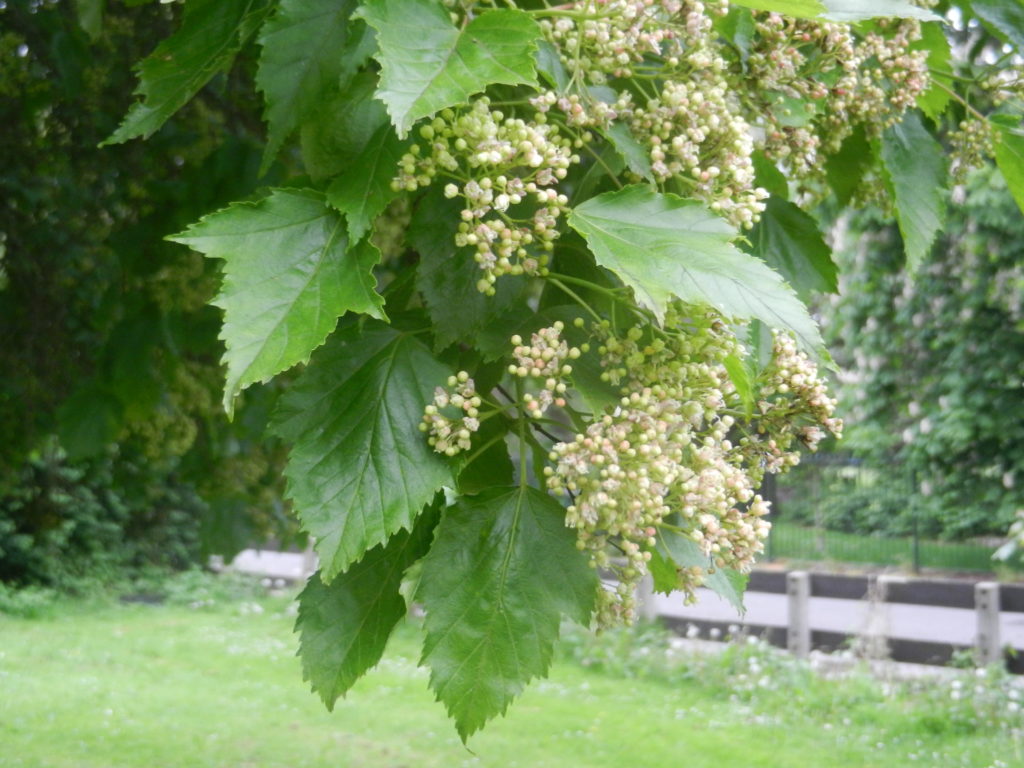The current long, hot, dry spell of weather has resulted in very high pollen counts in the air, certainly in eastern England. At this time of year the air is full of pollen from both grasses and trees, the former now in full flower, the latter coming to the end, in most cases, of their flowering season. It seems that different pollen sources affect sufferers of asthma differently; personally I find that only an expensive type of eyedrop, Systane, helps prevent my eyes from becoming inflamed and itchy. At ground level the air is full of invisible pollen particles, especially at this time of year, which are inhaled on every intake of breath. I wonder to what extent other air breathing mammals suffer as a result? I also wonder if residents of tower blocks when standing on their balconies will be inhaling less pollen.

Tree flowers, if they have been pollinated by insects or wind-blown pollen, are now turning to seeds. What happens to these seeds varies from species to species. Some heavy seeds fall to the ground by force of gravity, horse chestnuts (conkers) and beech ‘nuts’ for example; this giving rise to the saying ‘the apple does not fall far from the tree’, the apple tree being an example of seeds that fall to ground inside their food source, apple (fruit).
Evolution has determined that other types of tree seeds do not rely simply on gravity. The seeds of some tree species have ‘wings’. These vary in size and shape across different species but share the potential to be carried beyond the site of the mother tree by gliding in the wind. The angled winged seeds of the sycamore and maple are easy to recognise and are so shaped that as they drift to ground they gyrate like the blades of a helicopter. Birch seeds are shaped like the wings of a butterfly while those of ash are like a surround to the single seed. Apparently the distance travelled through the air by some winged seeds, particularly sycamore, has been measured to a number of miles. This explaining why the sycamore is often the first tree species to colonise open spaces.
Battle for survival in the ‘wildwood’.
(to be continued)